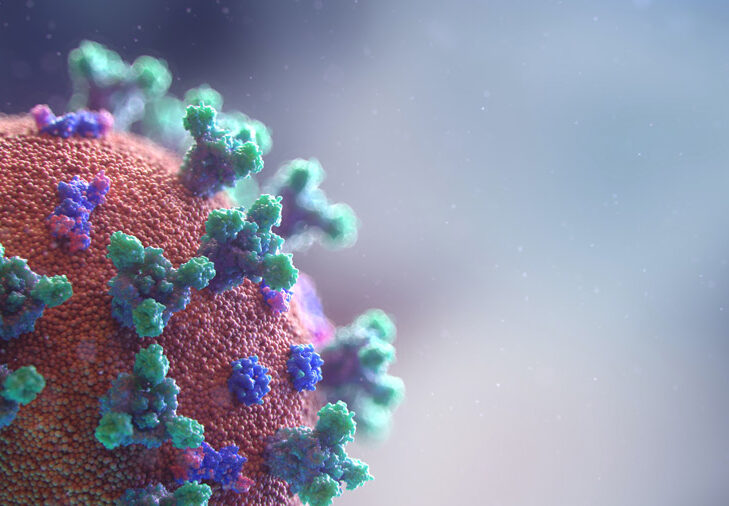
Minimising risks from Covid-19 exposure in the industrial workplace
Since the age of eight, when he was gifted a microscope by his parents, Dr. Frederick J. Passman has held a keen interest in environmental microbiology. Passman has forged a career out of his passion, achieving an AB in Microbiology from Indiana University, and completing his PhD in Marine Microbiology at the University of New Hampshire in 1977. Passman has been active professionally for more than 50 years, and consults to government and private industry on a diverse range of subject matter stretching from microbial contamination control in industrial process-fluids to composting municipal sewage sludge. Passman is a fellow of both ASTM and STLE and has more than 40 publications to his name.
Passman plays a prominent role in international standards organisation ASTM, a group that develops and publishes voluntary consensus technical standards. He is vice-chair of ASTM subcommittee D.02.14 on Fuel Cleanliness and Stability and chair of the Fuel Microbiology Task Force on the same subcommittee. Passman is chair of ASTM subcommittee E.34.50 Health and Safety of Metalworking Fluids (MWF), vice-chair of ASTM committee E34 Occupational Health and Safety, and is an active member of E.35.15 on Antimicrobial Pesticides.
The impressive microbiologist has drafted ASTM standards for each of these committees. There are now eight fuel microbiology related standards, with a ninth undergoing the ballot process ﹣ a practice for testing fuels for microbes using the Quantitative Polymerase Chain Reaction method. A ballot for a proposed new guide on MWF foaming tendency has also just been completed in E.34.50. Some microbes in chemicals can cause MWF to foam, so the ability to test MWF foaming tendencies is important, says Passman.
MWF that has been running for two to three years can experience an increase in heavy metal presenting an inhalation health risk, says Passman. ASTM has commenced work on a further standard to guide on this issue. From there, we will propose some test methods, says Passman.
Dr. Passman recently joined Vicky Villena-Denton, CEO of F&L Asia Ltd, on F+L Webcast to discuss how to minimise risks from Covid-19 in the industrial workplace. By the end of September, there were 33 million cases of Covid-19, and more than one million deaths, worldwide. With the U.S. President, his wife and his close aides, contracting the virus themselves in early October, Covid-19 once again occupied the headlines throughout the world.

Passman believes global figures on Covid-19 are likely underestimates of what is happening. From an economic perspective, we want people to return to work, we want industries around the globe to return to full productivity but in doing so, we need to keep our employees safe, he says. One of the few industry experts on industrial microbial ecology, Passman discusses how people can return to work safely in an industrial setting, where social distancing can be challenging. There are reasonable measures that can be taken to minimise the risk to those who are working in industrial settings, says Passman, but “the devil is in the detail.”
There have been differing responses from individual countries in an attempt to contain the virus. Typically, those that have managed the virus most effectively have employed a combination of strict border and movement control, and good execution of testing. Countries that have gotten the virus under control have taken the threat seriously, says Passman, taking measures to prevent people from transferring the virus from one person to another. In the United States, certain political factions are anti-science and would prefer to have less data. However, an inaccurate number doesn’t mean fewer people are getting sick or there is less stress on the healthcare system, he says.
Many businesses have underestimated the risk and are not taking the necessary precautions to protect the health and safety of workers. Companies burying their head in the sand is an issue Passman has become all too familiar with during his extensive career.
In the 1980s, I had clients that would get angry at me because before I had them test for microbial contamination, they had “never had microbial problems,” says Passman. They had simply changed the fluid every 12 weeks when the odour got too bad. Once they began monitoring and treating, they developed systems that could run for two to three years without problems. At the time, they were unable to recognise if you don’t measure something you can’t manage it, he says.
 There is no reason so many people need to be getting sick from Covid-19. Studies have repeatedly shown that the greatest risk occurs through exposure to airborne viruses in enclosed spaces. There is a range of measures that can be taken, but it is not as simple as staying a safe distance from each other. General health guidance assumes only casual contact between individuals. The considerations are greater when confined to a space for eight hours a day, says Passman.
There is no reason so many people need to be getting sick from Covid-19. Studies have repeatedly shown that the greatest risk occurs through exposure to airborne viruses in enclosed spaces. There is a range of measures that can be taken, but it is not as simple as staying a safe distance from each other. General health guidance assumes only casual contact between individuals. The considerations are greater when confined to a space for eight hours a day, says Passman.
In an indoor industrial setting, improving ventilation and air exchange is critical, to make close spaces more like outdoor spaces, says Passman. Increasing the space between workstations is also important to ensure that personnel are distanced from one another throughout the day. This may require limitations on how many people can be active in an industrial setting at any one time.
Appropriate protective equipment is a necessity. “We can provide workers with n95 masks instead of just regular hospital masks,” says Passman. The Biodeterioration Control Associates, Inc., CEO also emphasised the importance of having people dedicated to disinfecting surfaces, and of reinforcing good hygiene practices among workers such as regular hand washing to ensure there is no accidental transmission of the virus. All of these initiatives are “intellectually easy but emotionally difficult to achieve,” says Passman.
A wide range of virus survival times have been reported when Covid-19 laden aerosols land on surfaces, says Passman. On a smooth service that is exposed to sunlight on a warm, dry day, Covid-19 becomes denatured much faster than on a moist surface or when UV light cannot attack the virus. Health guidance recommends workers wear gloves, though Passman highlights the risk of concentrating virus particles onto gloves and causing infection. Workers need to take care to remove gloves and wash their hands before their hands touch their face, says Passman.
In the past, the MWF industry has demonstrated the ability to minimise hazard exposure. The sector did a tremendous job of reducing the incidence of general allergenic diseases ﹣ inhaling metalworking fluid mist and developing asthma of industrial allergies, says Passman. Companies spent billions replacing open machines with enclosed machines to reduce the risk. Similar risk mitigation and innovation will be required if industry is to return to optimal productivity in the immediate term.

When it comes to microbiology, there is still so much we do not know, says Passman. Right now, we are limited in what we can do to prevent microbes causing damage. We kill them and hope not to kill anybody around them, he says.
There have been some fascinating breakthroughs over the past couple of years in our understanding of human microbiomes, says Passman. We are gaining greater understanding, with the discovery of microbes that historically we have never been able to detect before. Organs we used to think were sterile have microbes associated with them, says Passman. The next step is to figure out why they are there, what they are doing, and how important they are in our survival. Our ability to understand environmental conditions that make microbes behave in a particular way will unlock new ideas to prevent them from causing damage. If we can understand what turns good microbes bad, we may be able to change the chemistry in the system so microbes are less likely to cause problems, says Passman.
While there are exciting developments in the field of microbiology, a key challenge is the changing ownership of companies. Increasingly, companies are owned by investment companies, who are not fond of research and development, he says, they want a cash cow. Across the industry, the number of laboratories that are supporting microbiologists has dropped dramatically over the past few decades such that they are barely keeping pace with technical support, let alone finding time to ask long term questions, says Passman.
You can listen to the entire podcast with Dr. Frederick J. Passman at https://www.flweek.fuelsandlubes.com/fl-webcast







